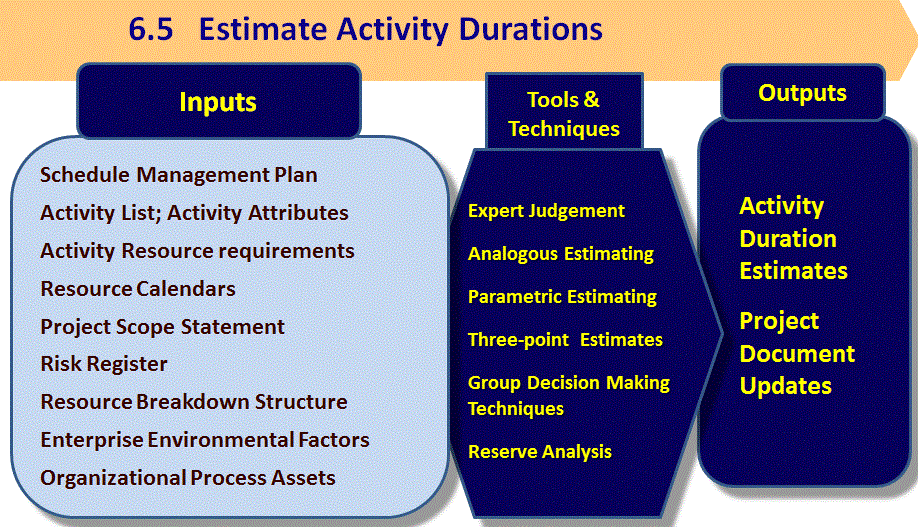

Some examples of inputs that can be used in the process of activity duration estimation are: Once we have a completed and sequenced list of activities, we can start to consider the best techniques for estimated their durations.
#ESTIMATE ACTIVITY DURATIONS INSTALL#
For example, we cannot install a roof until all the walls are erected. To do this we define relationships between the activities to show their dependence upon preceding work completed. Next, we need to get these activities into a logical sequence. All we need to do is make sure we assign the appropriate activities to the correct sections of the WBS. At this point, we’re not concerned with their durations we simply want to make sure we capture all the likely activities required to complete the project.Ī good Work Breakdown Structure (WBS) is helpful because it already outlines the major deliverables for the project. The first step in the process is to define the activity list. There is a sequence of steps that helps with estimating activity durations as you put together a project schedule, as shown below in Figure 1. We will also discuss how using Primavera P6 can help with estimating activity durations. In this article, we will look at some of the standard techniques and tools used for getting the best estimate of activity duration possible.

Resources – quantity required availability, skill level, etc.Effort – the total hours required to complete the work.Duration – the number of days, weeks, or months the activity will run.When estimating, you need to consider that every activity has three attributes: A common mistake with new project managers and schedulers is to try and estimate the activity duration for each task, often thinking in terms of how many linear days it might take to complete, this is known as ‘Guessing.’ One of the keys to a good schedule is accurately estimating activity durations.


 0 kommentar(er)
0 kommentar(er)
